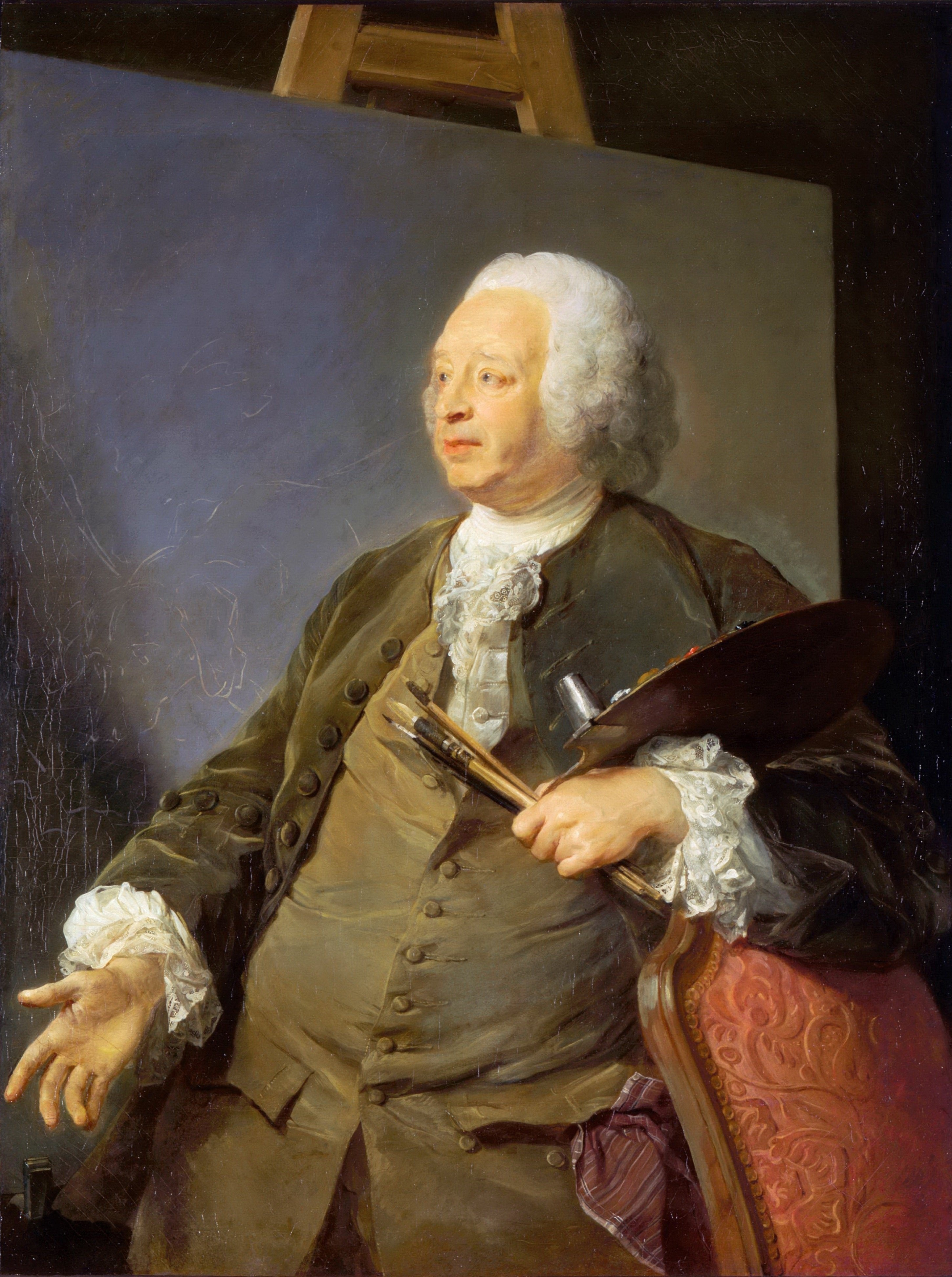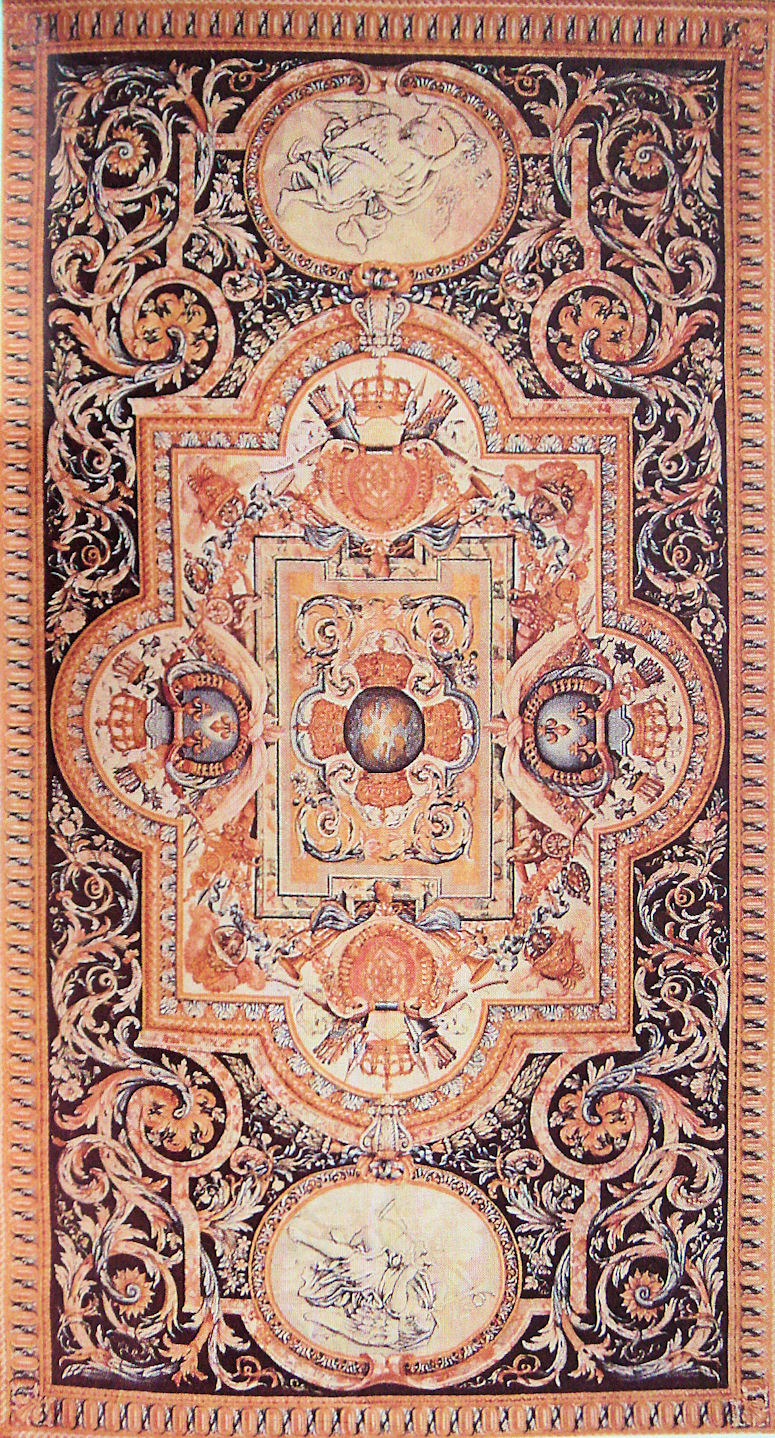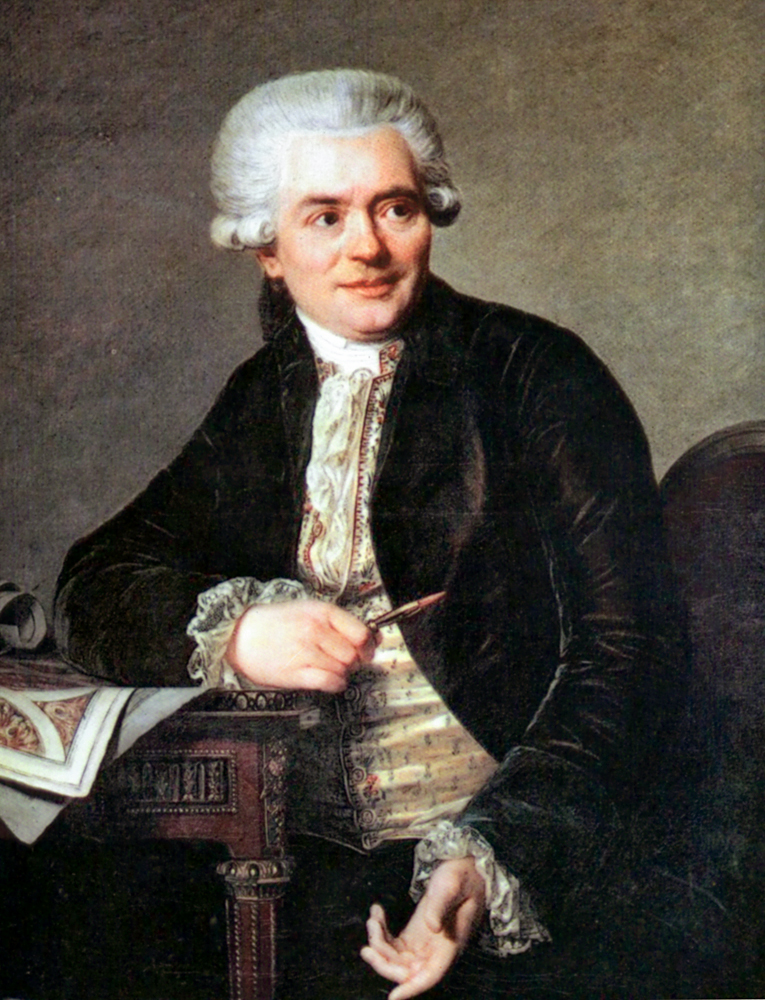|
Musée Nissim De Camondo
The Musée Nissim de Camondo is a historic house museum of French decorative arts located in the Hôtel Camondo at 63, rue de Monceau, on the edge of Parc Monceau, in the 8th arrondissement of Paris, France. The nearest Paris Métro stops are Villiers and Monceau on Line 2. The Paris Convention and Visitors Bureau describes the museum as housing "a spectacular collection of French decorative art from the second half of the 18th century. Admire Aubusson tapestries, canvases by Élisabeth Vigée-Lebrun or items that once belonged to Marie-Antoinette. Also on display, a collection of Sèvres porcelain and furniture by cabinetmakers Riesener and Oeben". History The mansion was built in 1911 by Count Moïse de Camondo, a banker, with architect René Sergent, to set off his collection of eighteenth-century French furniture and art objects. Its design was patterned on the Petit Trianon at Versailles, though with modern conveniences. On his death in 1935, it was announced that both ... [...More Info...] [...Related Items...] OR: [Wikipedia] [Google] [Baidu] |
Auschwitz Concentration Camp
Auschwitz concentration camp ( (); also or ) was a complex of over 40 concentration and extermination camps operated by Nazi Germany in occupied Poland (in a portion annexed into Germany in 1939) during World War II and the Holocaust. It consisted of Auschwitz I, the main camp (''Stammlager'') in Oświęcim; Auschwitz II-Birkenau, a concentration and extermination camp with gas chambers; Auschwitz III-Monowitz, a labor camp for the chemical conglomerate IG Farben; and dozens of subcamps. The camps became a major site of the Nazis' final solution to the Jewish question. After Germany sparked World War II by invading Poland in September 1939, the '' Schutzstaffel'' (SS) converted Auschwitz I, an army barracks, into a prisoner-of-war camp. The initial transport of political detainees to Auschwitz consisted almost solely of Poles for whom the camp was initially established. The bulk of inmates were Polish for the first two years. In May 1940, German criminals broug ... [...More Info...] [...Related Items...] OR: [Wikipedia] [Google] [Baidu] |
Jean-Baptiste Oudry
Jean-Baptiste Oudry (; 17 March 1686 – 30 April 1755) was a French Rococo painter, engraver, and tapestry designer. He is particularly well known for his naturalistic pictures of animals and his hunt pieces depicting game. His son, Jacques-Charles Oudry, was also a painter. Biography Jean-Baptiste Oudry was born in Paris, the son of Jacques Oudry, a painter and art dealer, and his wife Nicole Papillon,Bryan,1886-9 relative of the engraver Jean-Baptiste-Michel Papillon. His father was a director of the Académie de Saint-Luc art school, which Oudry joined. At first, Oudry concentrated on portraiture, and he became a pupil and perhaps a collaborator of Nicolas de Largillière from 1707 to 1712. He graduated at only 22 years of age, on 21 May 1708, at the same time as his two older brothers. The next year, he married Marie–Marguerite Froissé, the daughter of a ''miroitier'' (a mirror-maker) to whom he gave lessons in painting. Oudry became an assistant professor at Acad ... [...More Info...] [...Related Items...] OR: [Wikipedia] [Google] [Baidu] |
Hubert Robert
Hubert Robert (22 May 1733 – 15 April 1808) was a French painter in the school of Romanticism, noted especially for his landscape paintings and capricci, or semi-fictitious picturesque depictions of ruins in Italy and of France.Jean de Cayeux. "Robert, Hubert." Grove Art Online. Oxford Art Online. Oxford University Press. Web. 13 Jan. 2017 Biography Early years Hubert Robert was born in Paris in 1733. His father, Nicolas Robert, was in the service of François-Joseph de Choiseul, marquis de Stainville a leading diplomat from Lorraine. Young Robert finished his studies with the Jesuits at the Collège de Navarre in 1751 and entered the atelier of the sculptor Michel-Ange Slodtz who taught him design and perspective but encouraged him to turn to painting. In 1754 he left for Rome in the train of Étienne-François de Choiseul, son of his father's employer, who had been named French ambassador and would become a Secretary of State for Foreign Affairs to Louis XV in 1758. In Ro ... [...More Info...] [...Related Items...] OR: [Wikipedia] [Google] [Baidu] |
Guardi
Francesco Lazzaro Guardi (; 5 October 1712 – 1 January 1793) was an Italian painter, nobleman, and a member of the Venetian School. He is considered to be among the last practitioners, along with his brothers, of the classic Venetian school of painting. In the early part of his career he collaborated with his older brother Gian Antonio in the production of religious paintings. After Gian Antonio's death in 1760, Francesco concentrated on ''vedute''. The earliest of these show the influence of Canaletto, but he gradually adopted a looser style characterized by spirited brush-strokes and freely imagined architecture. Biography Francesco Guardi was born in Venice into a family of nobility from Trentino. His father Domenico (born in 1678) and his brothers Niccolò and Gian Antonio were also painters, later inheriting the family workshop after the father's death in 1716. They probably all contributed as a team to some of the larger commissions later attributed to Francesco. His si ... [...More Info...] [...Related Items...] OR: [Wikipedia] [Google] [Baidu] |
Aubusson, Creuse
Aubusson (; Occitan auvergnat: ''Le Buçon'', formerly ''Aubuçon'') is a commune in the Creuse department region in central France. Geography Aubusson is situated in the southern part of the ''département'', at the confluence of the rivers Creuse and Beauze. The route nationale N141 goes through the town. History Local lore previously held that the community was settled by defeated Berbers following the 8th-century Battle of Tours, but it is now established that Aubusson has existed at least since the Gallo-Roman period. The Camp des Châtres, within the town's boundaries, for a long time considered a Roman fort, actually dates back a little further, to the Iron Age. The town was known as ''Albuciensis'' in 936 and under the name '' Albuconis'' in 1070. The name possibly originates from a name of a man, Albucius Other scholars claim the name is from a Celtic word meaning '' craggy''. In the Middle Ages the town was ruled by viscounts. The vicecomital family also p ... [...More Info...] [...Related Items...] OR: [Wikipedia] [Google] [Baidu] |
Beauvais
Beauvais ( , ; pcd, Bieuvais) is a city and commune in northern France, and prefecture of the Oise département, in the Hauts-de-France region, north of Paris. The commune of Beauvais had a population of 56,020 , making it the most populous city in the Oise department, and third most-populous in Picardy. Together with its suburbs and satellite towns, the metropolitan area of Beauvais has a population of 128,020. The region around Beauvais is called the Beauvaisis. History Beauvais was known to the Romans by the Gallo-Roman name of ''Caesaromagus'' (''magos'' is Common Celtic for "field"). The post-Renaissance Latin rendering is ''Bellovacum'' from the Belgic tribe the Bellovaci, whose capital it was. In the ninth century it became a county (comté), which about 1013 passed to the bishops of Beauvais, who became peers of France from the twelfth century. This cites V. Lhuillier, ''Choses du vieux Beauvais et du Beauvaisis'' (1896). At the coronations of kings the Bisho ... [...More Info...] [...Related Items...] OR: [Wikipedia] [Google] [Baidu] |
Louvre
The Louvre ( ), or the Louvre Museum ( ), is the world's most-visited museum, and an historic landmark in Paris, France. It is the home of some of the best-known works of art, including the ''Mona Lisa'' and the ''Venus de Milo''. A central landmark of the city, it is located on the Right Bank of the Seine in the city's 1st arrondissement (district or ward). At any given point in time, approximately 38,000 objects from prehistory to the 21st century are being exhibited over an area of 72,735 square meters (782,910 square feet). Attendance in 2021 was 2.8 million due to the COVID-19 pandemic, up five percent from 2020, but far below pre-COVID attendance. Nonetheless, the Louvre still topped the list of most-visited art museums in the world in 2021."The Art Newspaper", 30 March 2021. The museum is housed in the Louvre Palace, originally built in the late 12th to 13th century under Philip II. Remnants of the Medieval Louvre fortress are visible in the basement ... [...More Info...] [...Related Items...] OR: [Wikipedia] [Google] [Baidu] |
Savonnerie
The Savonnerie manufactory was the most prestigious European manufactory of knotted-pile carpets, enjoying its greatest period c. 1650–1685; the cachet of its name is casually applied to many knotted-pile carpets made at other centers. The manufactory had its immediate origins in a carpet manufactory established in a former soap factory (French ''savon'') on the Quai de Chaillot downstream of Paris in 1615 by Pierre DuPont, who was returning from the Levant. Under a patent (''privilège'') of eighteen years, a monopoly was granted by Louis XIII in 1627 to DuPont and his former apprentice Simon Lourdet, makers of carpets ''façon de Turquie'' ("in the manner of Turkey"). Until 1768, the products of the manufactory remained exclusively the property of the Crown, and Savonnerie carpets were among the grandest of French diplomatic gifts.The ambassadors of Russia, Spain, Denmark, Siam and even an unauthorized "ambassador" from Persia were all presented with Savonnerie carpets (Stande ... [...More Info...] [...Related Items...] OR: [Wikipedia] [Google] [Baidu] |
Georges Jacob
Georges Jacob (6 July 1739 – 5 July 1814) was one of the two most prominent Parisian master ''menuisiers''. He produced carved, painted and gilded beds and seat furniture and upholstery work for the French royal châteaux, in the Neoclassical style that is associated with Louis XVI furniture. Life and career Jacob was born in Cheny, Burgundy. He arrived in Paris in 1754 and was apprenticed to the chairmaker Jean-Baptiste Lerouge where he met Louis Delanois, whose advanced neoclassical taste was to have a great influence on Jacob. He was received master 4 September 1765, presenting for his masterpiece a small chair of gilded wood, which survives. Without marrying either the daughter or the widow of an established ''menuisier'',Jacob married in 1767 Jeanne-Germaine Loyer with whom he had five children. Jacob set up his own premises. He employed in his workshop numerous specialist carvers and gilders. In 1785, Jacob produced the first mahogany chairs ''à l'anglaise'', for t ... [...More Info...] [...Related Items...] OR: [Wikipedia] [Google] [Baidu] |
Jean Henri Riesener
Jean-Henri Riesener (german: Johann Heinrich Riesener; 4 July 1734 – 6 January 1806) was a famous German ''ébéniste'' (cabinetmaker), working in Paris, whose work exemplified the early neoclassical "Louis XVI style". Life and career Riesener was born in Gladbeck, Westphalia, Germany. He moved to Paris, where he apprenticed soon after 1754 with Jean-François Oeben, whose widow he married; he was received master ''ébéniste'' in January 1768. The following year, he began supplying furniture for the Crown and in July 1774 formally became ''ébéniste ordinaire du roi'', "the greatest Parisian ''ébéniste'' of the Louis XVI period." Riesener was responsible for some of the richest examples of furniture in the Louis XVI style, as the French court embarked on furnishing commissions on a luxurious scale that had not been seen since the time of Louis XIV: between 1774 and 1784, he received on average commissions amounting to 100,000 livres per annum.He and David Roentgen were M ... [...More Info...] [...Related Items...] OR: [Wikipedia] [Google] [Baidu] |






